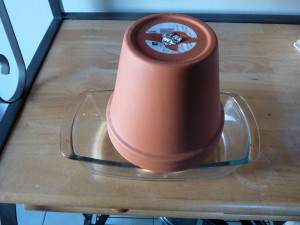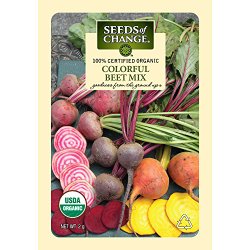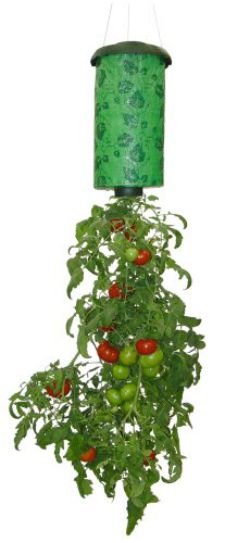Vegetables That Are Perfect to Plant in Late Summer
Vegetables That Are Perfect to Plant in Late Summer
The long dog days of summer are here as the days are hotter and the sun sets late into the night. Any cool season vegetable you had in your garden are at the end of their days and warm season veggies are still going strong. Now it is time to grow vegetables that are perfect to plant in late summer for the fall.
Squash
Squash plants encompass many different subspecies of plants. In the squash family you have cucumbers, zucchini from yellow crookneck to pattypans to green beauties. Then add in your winter squash like acorn, butternut, and gourds. Don’t forget the many varieties of pumpkins that also fall into this category from Jack O’Lanterns to minis and sugars to Giants. All of these plants are perfect to get into your garden around the 4th of July.
Winter squash is planted in the summer and then can overwinter for months at a time. Planting pumpkins in July allows them to be ready to carve by Halloween and cooked up for pumpkin pie by Thanksgiving.
Root Vegetables
A few root vegetables do best when planted in late summer and then come to maturity in the cool days of fall. This is the perfect time to plant beets, turnips, fennel, kohlrabi, and radishes. You can also get in a few succession plantings of carrots if you live where you get cool summer nights. Bunching onions like scallions and garlic chives also do great when planted in late summer.
Greens
Quite a few green vegetables do best when planted in late summer. This allows the seeds to warm up and germinate, but the plant matures as the nights get longer and cooler. Start from seed Swiss Chard, kale, collard greens, cabbage, broccoli, and spinach. These plants will need to be well watered until the summer heat dies down to build a healthy root system.
Tomatoes
Tomatoes are a true heat-loving plant! When grown in late summer, start with transplants instead of seeds as it is too warm for them to germinate. Once the temperatures drop below 75 degrees then the plant will flower and produce buds. Tomatoes like to produce in the sweet spot between 55° and 75° which is perfect fall weather!
Do you have a favorite vegetable you are planting now for fall harvest? If so, what is it!?
How to water plants in the Summer

To prevent your plants hanging their heads in summer, they need plenty of water. But how much, how often, water from above or below? Here you find some smart and helpful facts for watering your plants.
Rule no. 1: Keep evenly moist
Most plants depend on even moisture. However, slight drying out before watering promotes root growth of the plants.
Rule no. 2: Water more seldom but then thoroughly
In the flower bed, one to two watering sessions per week are usually sufficient: better to water more seldom but with plenty of water rather than a little water often.
Rule no. 3: Water late in the evening or early in the morning
When you water cooled soil in the evening or night then less water evaporates than as on hot soil during the day. And the plants can sufficiently supply themselves with water before the next day’s heat.
Rule no. 4: Keep leaves dry
Wet leaves become diseased leaves. Kept wet overnight, leaf-mould diseases may result. Leaves that are made wet in the sun develop slight burn marks (burning glass effect of the water droplets).
Requirement-suited watering means that the water must sufficiently reach the roots. Too-low water quantities often only cover the upper soil centimetres – or don’t even reach them at all, e.g. when there is a mulch covering of the soil and too little irrigation. Requirement-suited watering also means that crop plants are particularly dependent upon evenly moist soil in the time until their crops are ripe for harvesting (examples: the forming of roots and corms [carrots, potatoes], leaves [basil, field salad], heads [cauliflower, lettuce], husks [beans] or fruit [tomatoes, fruit]).
Rule no. 5: Give the right water quantity
Rule no. 6: Give larger water quantities in parts
Water needs a moment to seep into the soil. Before precious water in the bed flows away unused, it’s better to water repeatedly in parts.
Rule no. 7: Water with a target but distribute
Always watering at only one root point leads to one-sided root growth and thereby to poorer nutrient absorption in the soil. Therefore, always water around the plant and distribute in the entire irrigation area.
Rule no. 8: Irrigate in a way that saves water
Water as much as necessary and as little as possible. This is simplified with an automatic irrigation system with moisture sensor – in the bed, on the balcony and on the lawn.
Rule no. 9: Avoid waterlogging
Waterlogging suppresses the breathing air of the roots out of the soil – the root cells drown without oxygen.
Rule no. 10: Use quality, clay-rich soil
Plant soil rich in clay minerals has better expanding properties and can therefore hold soil in the water better and in a more even way. In wet summers and in winter, ensure water drainage to prevent waterlogging.
How To Heat A Small Room Inexpensively
These days with heating costs continuously on the rise we’re setting our thermostats lower in order to cut heating costs. Oh sure wearing an extra sweater is good but when you need a little extra warmth an you’re in a relatively small room then this actually works!
What you’ll need:
Tea light candles (beeswax is better for you and the environment)
Two clay pots, one smaller than the other so the larger one fits over
Loaf pan (glass or metal)
(Important – the small clay pot must not have a hole, if it does stuff it tightly with aluminum foil. The larger pot must have a hole.)
Instructions:
In the loaf pan place four tea light candles and light them. Position the smaller clay pot over the pan and then place the larger clay pot over the smaller one. The gap between the two pots enables a flow of air that then passes warm air around the room.
Light candles in a loaf dish.
Place small clay pot over the candles.
Place large clay pot over the smaller one.
Enjoy!












